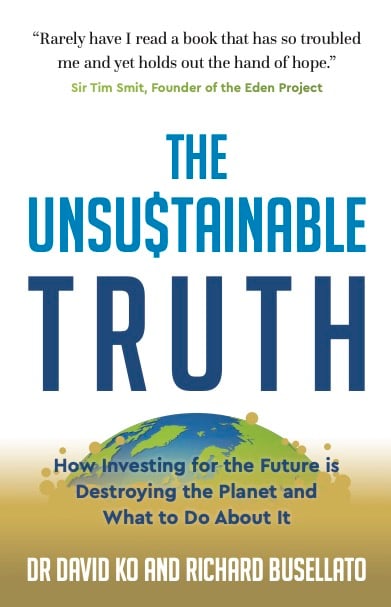We keep hearing a lot about NFTs in the drinks world but what we don’t hear so much is how much energy they consume. In a guest post, Joel Davidge from The Cocktail Service asks whether brands have to choose between sustainability and marketing efforts including NFTs, or can the two co-exist?
If, like me, you’ve been watching the spirits industry over the past few years, you’ll likely have seen two trends on the rise: sustainability and NFTs (non-fungible tokens). More and more drink brands are getting into the NFT scene in a big way, with Scottish distiller Glenfiddich releasing a 46-year-old single malt sold via BlockBar, a direct-to-consumer NFT platform.
NFTs are obviously a great way for companies create a buzz about their products. At the same time, brands are under increasing pressure to display their commitment to sustainability. But there is a contradiction here because, as we’ll see, NFTs consume a vast amount of energy. So, can brands do both? I wanted to find out, and so chatted to a few experts in the NFT and sustainability field.

Glenfiddich’s 46 year old single malt was sold through BlockBar
What are NFTs?
First up, if you don’t know what an NFT is, then hop over to read Lauren Ead’s fantastic explainer. Put simply, an NFT is a digital token or receipt which records the ownership of a unique and permanent asset.
For drinks brands it works like this: a brand creates an NFT tied to a limited-edition bottle. The person who purchases the NFT could then trade it in for the physical bottle. But this is much more about investment and collectability.
Sustainability in the drinks industry
If you’re reading this, odds are you’re a discerning drinker. You’ll likely have noticed the flurry of sustainable initiatives popping up in recent years. From Patron teaming up with Annabel’s Mayfair to support the Amazon, to the Savoy Hotel introducing Portobello gin in sustainable EcoSPIRITS format, venues and brands across the industry want to be seen to be helping.
Looking at the schedule for last year’s London Cocktail Week, I was struck by the number of sustainable activations on show. Though sustainability was not an official theme of the event, it was notable just how many brands were approaching their activations through the lens of sustainability. This is no surprise with Ernst & Young reporting that 84% of consumers say that sustainability is a consideration which is a potential problem for brands moving into NFTs.

Josh Sandhu from Quantus
NFTs = lots of energy required
Each time you create or sell an NFT this uses a lot of energy. The exact amount is hard to calculate, but an analysis of 18,000 NFTs suggested that the average NFT has a similar carbon footprint to the amount of electricity generated in a month by a person living in the European Union. With statistics firm Statista reporting that NFT trading activity more than doubled between July and August last year, you can see why some see this as a growing concern. Josh Sandhu, co-founder of NFT advisory and gallery Quantus thinks we will reach a point in the future where NFTs underpin many of the items we purchase.
Can NFTs be sustainable?
So, if we are to increasingly use NFTs, can we do this in a way that doesn’t negatively impact the environment? One method, offsetting, describes taking action to remove carbon from the atmosphere to compensate for emissions made in other places.
Take digital artist Beeple, who sold an NFT for $69 million in 2021. The artist, whose real name is Mike Winkelmann has said he plans to buy into carbon offset schemes to ensure the impact of his work is net positive.
Josh Sandhu believes that creators and brands have an ethical responsibility to offset the carbon created during the NFT process: “The Cryptocurrency market uses vast amounts of energy and that comes with an environmental cost. Speaking to a number of artists, a lot of them have the same concerns and that’s been the primary reason some will not enter the space,” he said. “That’s not to say that there aren’t alternate solutions that are carbon neutral though, because there are,” he continues. “But it is to say that because we’re still so early in this technology, there’s a lot of misconceptions about it and some folks are already very set in their opinions and aren’t too interested in changing them.”
Is it possible to do both?
In the case of Glenfiddich, last year the brand launched a pioneering sustainable transport system and plans to make it available across the whisky industry. So, if it’s simply about balancing the amount of carbon entering the at, one could argue that they are doing plenty to help the environment.
However, for writers David Ko and Richard Busellato, sustainability is more than simply offsetting the resources that we use; it is about answering honestly whether we should be using the resources in the first place. As the authors of The Unsustainable Truth, which explores how investing for the future is destroying the environment, they see NFTs as an unnecessary marketing ploy.
Whisky is already collectable
“NFTs are attempts to create a collectible,” says Ko. For them, sustainability is the opposite of that; it is about being honest in our need and use of resources. Arguing that we do not need NFTs to appreciate products like a premium whisky, Ko uses the example of buying a rare edition whisky. “When we purchase at auction a rare bottle of island malt, you are purchasing something that genuinely takes effort to create and takes effort to appreciate. It is a piece of history sealed with a cork,” he explained.
Busellato agrees, stating that “good beverages, like good whiskies, possess a quality of their own that does not need NFTs to be appreciated. They are good not because they have an NFT attached, but because of the love, care and skill spent in creating them.”
To illustrate their theme, they use an example of a high-quality whisky distiller, one who appreciates that the quality of the water matters as much as the time and patience needed for the malt and peat to develop flavour. “A good distiller is not trying to hold back from using resources,” says Busello. “Nor does he or she need to justify their use. A good product speaks for itself and in doing so, speaks up for the need to conserve the resources. In such a world, we naturally recognise that resources do not come for free and spend as much effort in ensuring they have a future as the whisky they help us produce has a future.”
Is offsetting enough?
Recalling my earlier discussion with Josh Sandhu, I raise the idea of carbon offsetting as a potential solution. Both Ko and Busello are dubious. “We have to be careful of the promises of offsetting,” responds Busello. “What offsetting does is to promise we can use resources first and they will be replaced later. In particular, we can burn fossil fuels and emit greenhouse gases now, and what we have emitted will be reabsorbed later.” He went on to say: “Unfortunately, the greenhouse gases we emit now will make climate worse whether it is absorbed later or not, and there is no guarantee that they will be absorbed. This makes it more important we keep fossil fuels for things that are really necessary.”
Whilst the world searches for ways to produce energy cleanly, both Ko and Busello are of the opinion that when we have to use fossil fuels, this should be reserved for things which really matter. “Hospitals in remote areas of poor countries may have no choice but to use fossil fuels. When we have to use fossil fuels, using them to run the hospitals is better than to show off our wealth.”
As NFTs continue to grow in popularity, it’s clear that there are several factors to consider before using them as part of a marketing strategy. Whilst they can be a great tool to introduce whisky and other spirits to new audiences, initiatives such as offsetting can only do so much to lessen the environmental impact of NFTs. As we begin to use this technology more and more, we may need to ask: should we even be creating these things at all?
